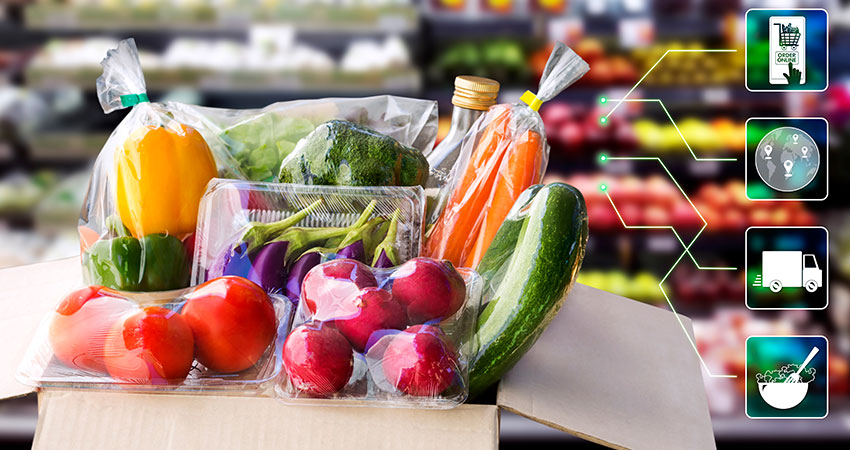Amazon and Walmart will continue to slug it out atop the world of global e-grocery food sales, with the ecommerce giant projected to pass the world’s largest brick-and-mortar retailer by 2024 with revenues of $15 billion, compared to $14 billion, according to a new report from research firm Edge by Ascential.
Ecommerce now accounts for 3% of food and beverage sales worldwide, according to Edge by Ascential, and is projected to grow to 4.5% by 2024.
Walmart for now is the dominant global player in e-grocery overall, with estimated 2019 sales of $49 billion, projected to reach $110 billion by 2024. Its overall estimated grocery sales in 2019 of $552 billion is more than the next three players combined: Costco, Seven & I Holdings of Japan (7-11) and Kroger.
The report projects a of CAGR of 13% through 2024 for e-grocery food sales, currently at $91 billion and expected to hit $162 billion in five years. While store-based sales of course still represent the vast majority of grocery revenue, ecommerce – as in other areas of retail – is growing at a much faster clip.
Grocers are continuing to expand online assortments, build out their fulfillment capabilities with partners and invest in technology such as automation, robotics and micro fulfillment centers to meet current and projected demand.
“We’re going to see a major shift to online and omnichannel over the next few years with edible grocery,” said Violetta Volovich, Associate Analyst for Edge by Ascential and a report author, in a release. “The barriers to adoption and growth in this sector are coming down, and retailers are investing heavily in technology, supply chain and partnerships that will make for an easy, seamless customer experience.”
By 2024, a projected 82% of online food and beverage sales will come from grocers using an omnichannel model, according to the report, compared to 15% for pure-play retailers and 3% from third-party marketplaces.
Fulfillment and delivery players like Instacart in the U.S., Home Run in the UK and Glovo, Supermercato24 and Stuart in other areas of Europe are gaining prominence and snapping up partnerships with major grocers.
As in other areas of retail, companies are testing out “store of the future” concepts across the globe, including Amazon Go in the U.S., Carrefour in France, Belgium and Brazil, JD.com and Alibaba in China and Tesco in the UK. Walmart for its part is adding more pickup towers in stores for online orders, and recently added same-day delivery in Mexico via WhatsApp, while Aldi is testing curbside pickup with existing delivery partner Instacart.
Doug Koontz, Director, Product, Content Strategy and Analytics for Edge by Ascential, said most small and midsize grocery players don’t have the capital to invest in much of the automation and technology being implemented by the big players, so will have to rely on partners to meet demand.
“We’re seeing the rise of third-party providers like Instacart, different delivery and technology platforms, where they aggregate a lot of shoppers and retailers in one place,” Koontz said. “Everyone benefits from the centralized scale, and players don’t have to outlay hundreds of millions to try to build a competing online grocery capability. But as far as things like automated micro fulfillment centers, it’s not very feasible for most smaller players. I can see some licensing opportunities out there, where enterprise software and automation and robotics companies do the work for you.”

